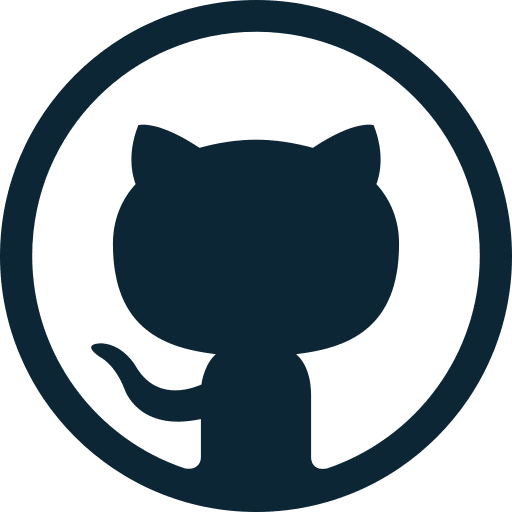Welcome to our ultimate guide to choosing Ruby on Rails for your web development project!
We’ll be shedding light on why this established web development framework could be the perfect fit for your next project in 2025 – or why it might not.
But chances are it will, so read on.
Ruby on Rails Overview
Ruby on Rails, also known as Rails or Ruby on Rails, is an open-source framework for web development created by David Heinemeier Hansson the CTO of Basecamp.

In fact, Basecamp was the first Rails web application, similar to how React Native was made by Meta’s team for Meta.
The greatest benefit of Ruby on Rails is – unsurprisingly – the ample amounts of pre-made solutions to common problems during the development of a web application or site, significantly reducing time and cost to take a project to completion.
Anything that cuts down on developer hours is good news for founders – more money for marketing!
Key Ruby on Rails Terminology
To any non technical founders reading this guide, here are some definitions of key terms regarding Ruby on Rails that will make it easier to understand the later sections.
If you’re a developer, feel free to skip this.
| Term | Definition |
| Model | The data and business logic that interacts with the database for retrieval/storage. |
| View | The user interface that displays data from the model and handles user input. |
| Controller | Controls the flow of data between the model and view, processing user input and updating the view accordingly. |
| MVC (Model-View-Controller) | A design pattern that separates an application into three components:
|
| Gem | A package or library of reusable code in Ruby, extending a Rails application. |
| Routes | Define how URLs map to controllers and actions, determining how requests are handled in the application. |
| Controller Action | Methods in the controller that respond to specific HTTP requests, corresponding to different pages or functionalities. |
| Asset Pipeline | Manages and compresses assets like stylesheets and JavaScript files, improving the performance of the application. |
| Active Record | Rails ORM (Object-Relational Mapping) that facilitates interaction with the database using Ruby code, eliminating the need for complex SQL queries. |
| Scaffold | Automatically generated files (model, views, controller) providing a basic CRUD (Create, Read, Update, Delete) interface for a resource in the application. |
| Middleware | Software between the application and server for functions like user login. |
| Rake | A command-line tool in Rails for task automation such as running database migrations. |
9 Advantages of Using Ruby on Rails
While not perfect, the fact that Ruby on Rails has been used for so long tells you it must have plenty of advantages, and we’ve listed some major ones in this section.
Hope you skimmed through our vocabulary list – many of those terms appear below!
1. Efficiency in Development
Developers benefit from a standardized structure that reduces the need for repetitive code, and Ruby on Rails significantly enhances efficiency by promoting conventions and automation.
This means less time spent on manual configuration and more focus on creating features and functionalities.
The framework’s built-in tools automate common tasks, allowing developers to work more swiftly and collaboratively, ultimately accelerating the development process.
2. Organized Architecture
Ruby on Rails adopts the MVC architecture, which provides a clear and organized structure for web applications.
This separation of concerns simplifies development and maintenance, allowing developers to work on specific components without affecting others.
This method of working makes it easier to understand, troubleshoot, and enhance different parts of the application.
The result of this organized structure is long-term sustainability and scalability.
3. Simplified Database Interaction
Active Record, the ORM used in Ruby on Rails, simplifies database interactions by allowing developers to use Ruby code instead of complex SQL queries.
This abstraction not only makes the code more readable but also reduces the chances of errors.
Developers can express database operations in a more natural language, enhancing productivity and making database-related tasks more accessible to a wider range of team members.
4. Quick Prototyping
The scaffolding feature in Ruby on Rails facilitates rapid prototyping, allowing developers to generate basic CRUD functionality with minimal effort.
This allows for the swift creation of prototype pages, enabling stakeholders to visualize and interact with the application early in the development process.
Quick prototyping is instrumental in refining requirements before investing time and resources.
5. Convention-Driven Development
Ruby on Rails adheres to the principle of “convention over configuration,”.
Simply put, the framework makes assumptions based on best practices.
This reduces the need for developers to specify every detail, resulting in a more straightforward and predictable development process.
The conventions in Rails guide developers, encouraging consistency across projects and making it easier for new team members to understand the codebase.
6. Extensive Ecosystem
Ruby on Rails leverages Gems, which are pre-built packages of code, to extend its functionality.
This extensive ecosystem allows developers to easily integrate features into their applications without reinventing the wheel.
By leveraging Gems, developers can access a wide range of functionalities, from authentication to complex business logic, saving time and effort in the development process.
7. Smooth Database Migrations
Managing and versioning changes to the database schema is simplified through Rails’ database migration system.
This allows developers to evolve the database structure over time while maintaining data integrity. The smooth handling of database migrations ensures that updates to the application can be executed seamlessly.
No more disruptions to the user experience!
8. Clear URL Handling
Using Ruby on Rails’s routing system, developers can define how URLs map to different parts of the application, making the structure clear and intuitive.
This not only aids in navigation but also contributes to the overall maintainability of the application. The clarity in URL handling makes it easier for developers to understand the flow of requests and responses.
9. Optimized Asset Management
The asset pipeline in Ruby on Rails optimizes the management of stylesheets and JavaScript files.
By compressing and organizing assets, the framework improves the performance of the application, leading to faster page loads, enhancing the user experience and overall responsiveness of the web application.
When To Use Ruby on Rails
Ruby on Rails shines in scenarios requiring a quick and efficient development process.

It also pairs well with projects requiring a solid, easily scalable framework, making it a compelling option for web development in 2025 and likely beyond.
- Content Management Systems (CMS):
- Efficient development, organized architecture, and quick prototyping make Ruby on Rails ideal for managing and updating content-centric platforms.
- Efficient development, organized architecture, and quick prototyping make Ruby on Rails ideal for managing and updating content-centric platforms.
- E-Commerce Platforms:
- Clear architecture, simplified database interactions, and Gems for payment processing contribute to efficient and secure e-commerce development.
- Clear architecture, simplified database interactions, and Gems for payment processing contribute to efficient and secure e-commerce development.
- Startups and MVPs:
- Convention-driven development, quick prototyping via scaffolding, and faster time-to-market advantages make Ruby on Rails a popular choice for startups and MVPs.
- Convention-driven development, quick prototyping via scaffolding, and faster time-to-market advantages make Ruby on Rails a popular choice for startups and MVPs.
- Educational Platforms:
- Simplicity in database interactions, ease of content management, and quick prototyping support the development of user-friendly and scalable educational platforms.
- Simplicity in database interactions, ease of content management, and quick prototyping support the development of user-friendly and scalable educational platforms.
- Blogging Platforms:
- Popular choice for blogging platforms due to efficient content management, organized structure, and quick prototyping capabilities.
- Popular choice for blogging platforms due to efficient content management, organized structure, and quick prototyping capabilities.
- API-Driven Applications:
- Convention-driven development and efficient database interactions make Ruby on Rails suitable for building scalable APIs, serving as backend for web and mobile applications.
When NOT To Use Ruby on Rails

- Mobile App Development:
- If the primary focus is developing mobile applications, dedicated frameworks like React Native (JavaScript) or Flutter (Dart) designed for cross-platform mobile development might be more suitable for efficient and native-like experiences.
- If the primary focus is developing mobile applications, dedicated frameworks like React Native (JavaScript) or Flutter (Dart) designed for cross-platform mobile development might be more suitable for efficient and native-like experiences.
- Small, Simple Websites:
- For small websites with minimal functionality, Ruby on Rails might introduce unnecessary complexity. Smaller frameworks or static site generators are more suitable, offering simplicity and efficiency.
- For small websites with minimal functionality, Ruby on Rails might introduce unnecessary complexity. Smaller frameworks or static site generators are more suitable, offering simplicity and efficiency.
- Resource-Intensive Applications:
- In resource-intensive applications, such as real-time data processing or complex computations, Node.js or Django (Python) might be more appropriate due to their strengths in handling asynchronous and computational tasks.
- In resource-intensive applications, such as real-time data processing or complex computations, Node.js or Django (Python) might be more appropriate due to their strengths in handling asynchronous and computational tasks.
- Microservices Architecture:
- Building a microservices architecture with independent functionality for each service benefits from lightweight frameworks or languages that allow granular control over components.
- Building a microservices architecture with independent functionality for each service benefits from lightweight frameworks or languages that allow granular control over components.
- Specific Industry Requirements:
- Industries with specific regulatory or compliance requirements may favor technologies aligned with those standards. It’s crucial to evaluate the suitability of Ruby on Rails based on project constraints.
- Industries with specific regulatory or compliance requirements may favor technologies aligned with those standards. It’s crucial to evaluate the suitability of Ruby on Rails based on project constraints.
- High-Customization Requirements:
- Projects requiring highly customized solutions at a low level, with a need for maximum control over every aspect, may find a more lightweight or flexible framework better suited for customization.
- Projects requiring highly customized solutions at a low level, with a need for maximum control over every aspect, may find a more lightweight or flexible framework better suited for customization.
- Mobile App Development:
- If the primary focus is developing mobile applications, dedicated frameworks like React Native (JavaScript) or Flutter (Dart) designed for cross-platform mobile development might be more suitable for efficient and native-like experiences.
Organizations Successfully Using Ruby on Rails
Nothing proves a product’s worth quite like satisfied customers, of which Ruby on Rails has thousands.

Here are some notable companies that incorporate Ruby on Rails as a key part of their technology stack.
GitHub

GitHub, a widely-used platform for version control using Git, relies heavily on Ruby on Rails for its web interface. The framework facilitates efficient collaboration and code management for developers worldwide.
X (formerly Twitter)

While Twitter originally embraced Ruby on Rails for its web development, the platform has since undergone significant technology stack diversification. Despite this, Ruby on Rails played a pivotal role in Twitter’s early growth and development.
Basecamp

Basecamp, a project management and team collaboration tool, was developed by the company 37signals using Ruby on Rails. The framework contributed to the creation of a user-friendly and efficient platform for project organization and communication.
Airbnb

Airbnb, a leading online marketplace for lodging and travel experiences, initially utilized Ruby on Rails in the early stages of its development. While the platform has evolved, Ruby on Rails played a foundational role in building certain components of Airbnb.
Shopify

Shopify, an e-commerce platform enabling businesses to create online stores, initially relied on Ruby on Rails for its development. The framework played a key role in establishing the foundation for Shopify’s scalable and user-friendly e-commerce platform.
Groupon

Groupon, a deals and e-commerce platform, employed Ruby on Rails in its early development phases. The framework contributed to the creation of a dynamic and feature-rich web application for users to discover and purchase various deals and products.
Alternatives to Ruby on Rails
While Ruby on Rails is a robust option, alternatives have their own strengths.
We won’t dwell on this section too much, but here’s a table comparing Ruby on Rails with several common alternatives: For a deep dive into one of Ruby on Rails’ biggest alternatives, check out our guide to web development with ReactJS.
| Framework | Language | Strengths | Use Cases |
| Ruby on Rails | Ruby | Convention over configuration, rapid development, extensive community and ecosystem (Gems), follows MVC architecture. | Content management systems, e-commerce, startups, social networking. |
| Django | Python | Batteries-included philosophy, built-in admin interface, robust ORM, security features. | Web development, content management, applications with strong conventions. |
| Nest.js | JavaScript | Progressive framework for building efficient, scalable server-side applications. Built on top of Express.js, uses TypeScript, and follows modular architecture. | Lightweight applications, APIs, projects requiring real-time features. |
| Spring Boot | Java | Feature-rich, simplifies Java development, supports dependency injection, data access, and security. | Enterprise applications, large-scale projects on the Java Virtual Machine. |
| Laravel | PHP | Elegant syntax, developer-friendly, tools for routing, caching, and Eloquent ORM. | Web applications, content management, PHP-based projects. |
| Flask | Python | Lightweight and flexible, easy to get started with, highly customizable. | Small to medium-sized web applications, RESTful APIs. |
| ASP.NET Core | C# | Cross-platform, high-performance, supports multiple programming languages. | Enterprise applications, cloud-based projects in Microsoft ecosystem. |
Ultimately, the choice of framework depends largely on your development team’s expertise.
What we will say is that if you’re looking for speed, scalability, and a strong community backing, Ruby on Rails can go toe-to-toe with any of the above.
The Ruby on Rails Ecosystem
A critical part of the Ruby on Rails ecosystem is its gems and plugins. These modular and reusable software snippets enable rapid feature deployment.

Importance of Gems and Plugins
Gems and plugins play a pivotal role in enhancing the functionality and efficiency of Ruby on Rails (Ruby on Rails) applications.
Gems
- Significance: Gems are packages of reusable code that extend the capabilities of Ruby on Rails applications. They encapsulate specific functionalities, providing a modular approach to development.
- Efficiency: Gems reduce the need to reinvent the wheel by allowing developers to integrate pre-built solutions seamlessly.
- Examples:
- Devise: A flexible authentication solution for Ruby on Rails.
- CarrierWave: Simplifies file uploads with support for various storage backends.
- RSpec: A behavior-driven development framework for testing.
Plugins
- Role: While gems are external libraries, plugins are specific to Ruby on Rails and extend its core functionalities.
- Customization: Plugins allow developers to tailor the framework to their specific needs, providing a more personalized development experience.
- Examples:
- ActiveAdmin: A customizable admin interface for managing data in Ruby on Rails applications.
- CanCanCan: Adds an authorization layer to manage user roles and permissions.
- PaperTrail: Enables version control for models, tracking changes over time.
Strong Ruby on Rails Community and Support Resources
The vibrant Ruby on Rails community is a cornerstone of its success, offering robust support and collaboration opportunities.
Community Strength
- Collaboration: The Ruby on Rails community fosters collaboration through shared experiences, code contributions, and active discussions.
- Global Reach: With developers worldwide, the community ensures diverse perspectives and a wealth of expertise.
Support Resources
- Official Documentation: The Ruby on Rails documentation is comprehensive, serving as a valuable resource for developers of all levels.
- Online Tutorials and Courses: Numerous tutorials and courses, both free and paid, empower developers to enhance their Ruby on Rails skills.
- Stack Overflow: A thriving Ruby on Rails community on Stack Overflow provides a platform for problem-solving and knowledge sharing.
Resources, Tutorials, and Courses
1. Official Rails Guides:
2. Unofficial Rails Guides:
3. Online Courses:
4. Blogs and Websites:
4. Books:
- “Agile Web Development with Rails” by Sam Ruby
2024 Ruby on Rails Trends
Before we share our own observations about Rails last year, here are some facts:
- It has a dynamic and committed community of developers actively contributing to its ecosystem.
- High-profile companies like Airbnb, GitHub, Shopify, and Basecamp continue to rely on Ruby on Rails.
- Ruby on Rails serves as the backbone for numerous legacy projects still operational today.
- Ruby on Rails developers are still in demand in the job market across the world.
- Ruby on Rails offers abundant learning resources, including tutorials and courses.
- Ruby on Rails boasts a mature ecosystem with a variety of libraries (gems) and tools that significantly expedite development processes.
If you’re into nerd-speak, check out the official Ruby 2024 recap!
Based on the above, here were our three observations of Rails trends in 2024:
1. Growing Community Engagement
The dynamic and committed community supporting Ruby on Rails continued growing, leading to an increase in collaborative efforts, the development of new gems and tools, and an even more extensive pool of learning resources.

The community’s vibrancy contributes to the framework’s continuous evolution and vice versa.
2. Increased Adoption in Legacy Modernization:
As Ruby on Rails maintains stability and proves effective in powering legacy projects, there was an increased adoption trend for modernizing existing applications.
Companies with long-standing Ruby on Rails applications leveraged the framework’s stability while incorporating modern features and enhancements to meet evolving business needs.
3. Enhanced Developer Demand
The continued demand for Ruby on Rails developers in the job market suggested a trend of sustained relevance.
In 2024, this trend continued, with businesses valuing expertise in Ruby on Rails for both maintaining existing applications and developing new ones.
What Does 2025 Hold in Store for Ruby on Rails?
Ruby on Rails continues its trajectory of refinement and modernization in 2025 with several updates and improvements aimed at enhancing developer experience and application performance.

Highlights include:
- Improved Debugging and Usability: Fixes now ensure better error handling and debugging for templates, including preserving original backtraces for argument errors and enabling layouts to access local variables, addressing issues from as far back as Rails 5.1.
- Streamlined Schema Management: Table columns in
schema.rbare now sorted alphabetically, minimizing merge conflicts and simplifying collaboration on database schema updates. - Enhanced Active Storage: Active Storage plugins are now loaded during boot instead of on demand, improving error visibility and reducing runtime overhead.
- Developer Quality of Life Improvements:
- Color-coded Rails console prompts now include magenta for non-standard environments like staging.
- CI templates include a placeholder for
RAILS_MASTER_KEY, ensuring smoother integration with custom credentials. - Updates to ActiveSupport assertions simplify payload matching and add new capabilities for persisting matched notifications.
- Deprecated Features: Rails is deprecating legacy APIs like
String#mb_charsandActiveSupport::Configurable, emphasizing its commitment to modern Ruby practices.
With these updates, Rails demonstrates its focus on developer productivity, maintainability, and readiness for evolving application needs in 2025.
Conclusion
In conclusion, Ruby on Rails stands as a robust and efficient framework for web development, with its quick deployment and rich feature-set making it a top choice for many in 2023. Its well-developed ecosystem and supportive community only make the decision easier!
Before you embark on your web development journey, ensure you take into account all the factors and make an informed decision. For further assistance, don’t hesitate to head over to our service page at Upstack Studio.







